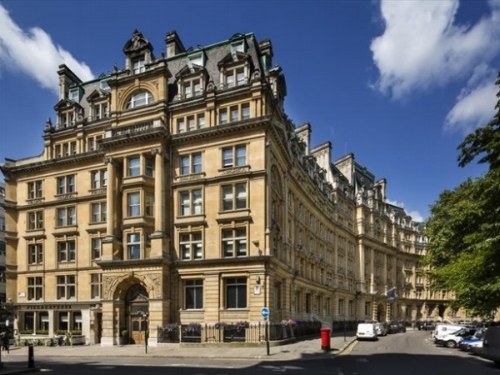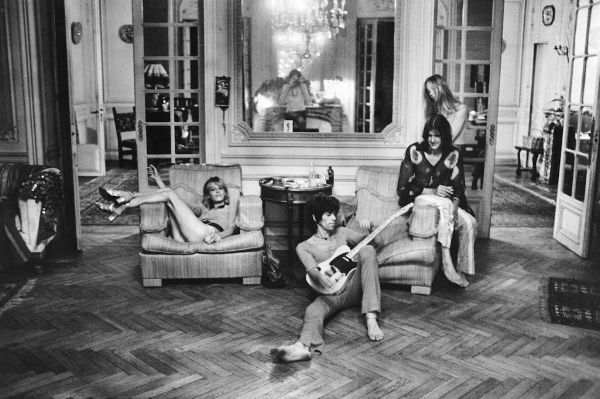Some First Class Homes of the First Class Passengers on the Titanic Part 4: Canada, England and Europe
While the majority of the First Class Staterooms and Suites on the Titanic were populated by Americans traveling to their homes stateside, there was also a sizable contingent of passengers who lived in other countries. Not surprisingly, being a British vessel, the next largest group in terms of numbers was the English, followed by Canadians, then the French and a half-dozen Swiss. This post will look at some of their homes, as well as a few owned by American expatriates onboard.
Canada
Lieutenant Colonel Arthur Peuchen was a former military officer, yachtsman and President of the Standard Chemical, Iron & Lumber Company of Canada.
The former home of Arthur Puchen on Jarivs Street
He had a home at 599 Jarvis Street in Toronto, but considered his Woodlands estate on Lake Simcoe home.
Woodlands
He survived the sinking and later lost most of his fortune due to bad investments, ending up in a house on 105 Roxboroughe St East.
Woodlands still stands.
George Wright of Halifax, Nova Scotia made a fortune printing Wright’s International Business Directories. Having a strong social conscience, he committed to developing better housing for the working poor, creating one of the earliest subdivisions anywhere designed to integrate homes for a range of economic classes.
He was lost on the sinking but his former home at 989 Young Ave is still standing.
Albert Dick
Vera Dick
Albert Dick was born in Winnipeg, but made his fortune in Calgary. He and his teenaged bride Vera had gone to Europe on a combination extended honeymoon (to give her some polish) and shopping trip for quality antique reproductions for their new Tudor style home in Calgary’s Mount Royal district.
The Dicks former home today
Both survived the sinking. They later added a grand staircase leading up to their home from the street.
While gossips whispered it was modeled after theTitanic’s Grand staircase, they looked hardly similar.
Mark Fortune, traveling on the Titanic with his family, was born on a farm in Ontario, Canada and left home as a teenager, traveling out west to make his way in the world. After several years in San Francisco, he moved to the province of Manitoba. He began speculating in real estate, buying up a large tracts of land along what was to eventually become Winnipeg’s main thoroughfare. His fortune secured, he erected a 36-room Tudor revival mansion on Wellington Crescent there.
Later converted to condominiums, it is still standing
Helene Baxter and her daughter Zette
Helene Baxter was the widow of a one-time prominent diamond broker and banker, traveling with her 24-year-old son Quigg
Quigg Baxter
and her married daughter Helene (Known as Zette). The family lived in an enormous mansion at 1201 Sherbrooke st West, until the early 1900s when her husband was convicted of embezzlement, serving 5 years in prison before his death in 1905.
The Baxters former home on Sherbrooke St
She later sold the mansion and moved into a respectable brownstone home at 33 St Famille st. Still comfortable, she financed a clinic on the same street so Helene’s physician husband could have his own business. Quigg drowned in the sinking while Helene and Zette were rescued.
England
In addition to the Countess of Rothes and the Duff-Gordons, which I covered an earlier post, here are some residences owned by their countrymen.
Hugh Woolner, the son of sculptor Thomas Woolner, grew up at 29 Welbeck Street in Marylebone, London.
After marrying in 1892, he moved to Fords Grove in Winchmore to start a family. Widowed in 1906, he moved back to Welbeck Street, joining his mother and unmarried siblings there. A stockbroker and director of several British companies, he survived the sinking and remarried in July 1912, moving to 815 Salisbury House soon afterward.
815 Salisbury House
Algernon Barkworth
Algernon Henry Barkworth was born into a wealthy landed family from Yorkshire. He returned to live at the family seat there named tranby House after the death of his father.
Barkworth was on the ship as it sank but was one of the lucky souls able to reach the overturned Collapsible Lifeboat boat and drag himself onto it. He lived the remainder of his life at Tranby House, which survives today as part of a high school.
William Edward Hipkins was a mechanical engineer who rose to executive positions with several firms. Widowed in 1910, he maintained a home in Birmingham
Hipkins' former residence on Augustus road in Birmingham
as well as a flat at 50 Albert Hall Mansions in London which he used as a base for business there and travel.
50 Albert Hall Mansions, still standing today
Hipkins perished in the disaster.
William Tyrrel Cavendish, from a well to do English family with Royal connections, grew up at Crakemarsh Hall in Staffordshire.
In 1906 he married Julia Siegel, who came from a wealthy Chicago family. The couple returned to England in 1907, eventually residing at Little Onn Hall in Staffordshire along with their two young sons.
Little Onn Hall
They were traveling along with Mrs. Cavendish’s maid to visit Julia’s father's estate in Mamaroneck, on the Long Island Sound.
Julia's fathers home in Mamaroneck
While Mr. Cavendish perished, Mrs., Cavendish and her maid were saved. She eventually moved to Crakemarsh Hall, where she lived until her own death in 1963. Crakemarsh Hall, later badly damaged by fire, was demolished in the 1990s, but Little Onn Hall survives to this day,
France
Madame Leontine Pauline Auberte was a well-known Parisian singer, but perhaps more famously, the mistress of Benjamin Guggenheim. As such, she lived in luxury at 17 Rue Leseur in Paris.
17 Rue Le Seur today
While Benjamin died, both Leontine and her maid were saved.
Although James Clinch Smith was a well-known New York socialite, owning homes there and in Newport, his wife preferred Paris, where she pursued a musical career. The couple bought a townhouse at 4 Villa Said, just off the Champs Elysees in 1905.
Villa Said, #4 is actually the townhouse off to the right in the picture
James had had recently convinced his wife to move back to New York and was enroute there to prepare their residence on Long Island for their homecoming. James died in the sinking.
Nella with some of their french Bulldogs
Mr. Samuel Levi Goldenberg, a lace merchant, was traveling with his wife, the former Nella Wiggins. He had an office at 109 Fifth Avenue and the couple owned a home in Riverdale, called Nellcote. They spent a good deal of time abroad, however, due to Mr. Goldenberg’s poor health. They kept an apartment in Paris and had recently bought a villa at Villefranche-sur-Mer, naming it Villa Nellcote.
Villa Nellcote
Well-known French Bulldog breeders, the couple was enroute to New York where Mr Goldenberg was to judge a dog show.
Interior of Villa Nellcote during the Rolling Stones occupancy
Their former villa became famous decades later when Keith Richards of the Rolling Stones began renting it in 1971.
Switzerland
William Augustus Spencer was born into a prominent New York family. He and his French-born wife Marie divided their time between New York, Paris and Lucerne, Switzerland, where he built an elaborate estate named Die Dreilinden.
The Spencer's villa on Lake Lucerne
Marie and her maid were saved while William perished.
Margaretha Fröhlicher-Stehli
Their daughter Hedwig
Maximillian Frolicher-Stehli was a partner of a silk manufacturing firm of R. Stehli Hausheeer & Son. It allowed his family to live in comfort in Zurich at Villa Reismart, at 6 Mittlestrasse.
The Frolicher Villa
Frohlicher along with his wife Margaretha and daughter Hedwig, with whom he was traveling, survived the sinking.
Dr. Max Stahelin-Maeglin was a lawyer and director of the Swiss Trust Co. He and his wife Martha resided at 24 Marschalken-strasse in Basel.
Traveling to New York for business, he survived the sinking.
And thus concludes my series on homes of the first class Titanic Passengers - For earlier posts, you can find them here!















































